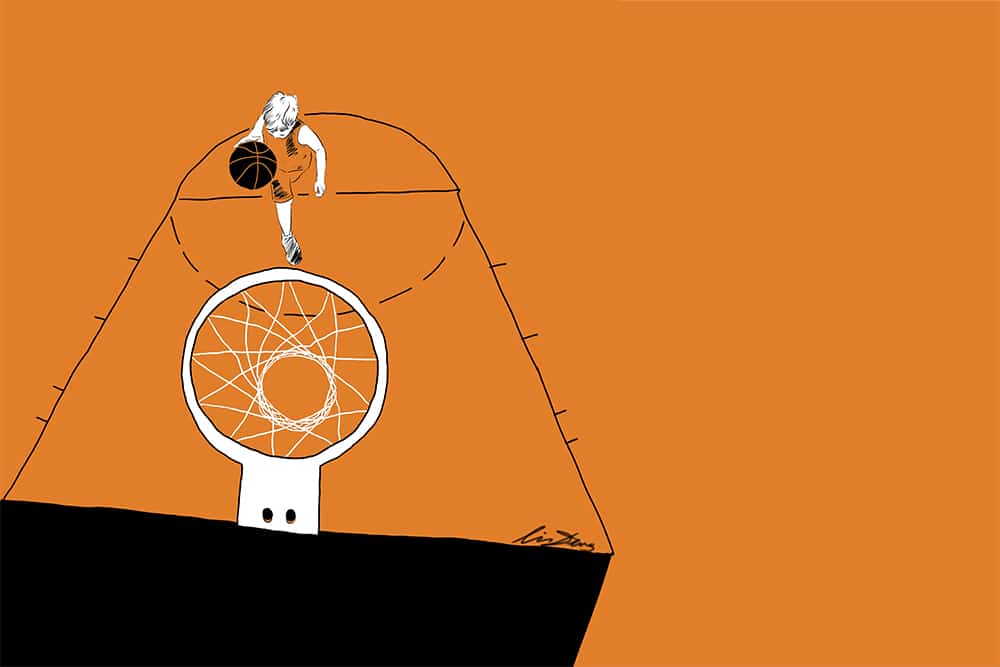A “performance paradox,” as Dr. Mike Clark — founder of the movement efficiency and injury prevention program Fusionetics — calls it, has been a recent topic of discussion amongst NBA circles. The fact of the matter is that the newer generations of NBA players are experiencing an unprecedented decline in musculoskeletal stability and an upsurge in biomechanical problems relative to their predecessors.
The culprit for these performance defects? Specialization: the tendency of athletes and their parents to remain fixated on a single sport all year round while neglecting other sports.
Dr. Neeru Jayanthi, Associate Director of the Primary Care Sports Medicine Fellowship at the Emory University School of Medicine, considers children to be specialized in a particular sport if they can identify their primary sport, train in it for more than eight months a year, and have ever quit a different sport in order to better focus on their primary sport.
Though specialization may sound harmless or even prestigious and impressive, Jayanthi reports that children who are characterized as ‘highly specialized’ in a single sport may have a 125 per cent greater risk of experiencing overuse injuries, particularly cartilage and ligament injuries, relative to unspecialized children. Similarly, David Bell, the University of Wisconsin-Madison’s Director of Injury in Sport Laboratory, and a team of researchers, found that highly specialized high school athletes are over twice as likely to suffer lower joint injuries, such as around the hips or knees, relative to their unspecialized counterparts.
Can anyone be blamed for this situation? Top athletes in major sports are some of the highest-income earners.
Simply put, the motivation behind these high levels of specialization at such an early age likely stems from the allure of lucrative athletic careers. Parents, coaches, and athletes alike all push for a great extent of sport-specific practice to attract the attention of scouts and talent evaluators who can advance the athlete’s career goals.
Though sound in logic, the route of early child sport specialization comes with varying consequences. Clark offers an analogy to describe the contemporary athlete: the athlete is like a car with a carefully-crafted and powerful engine, but one that lacks suspension and braking, thereby making the engine futile as it can never be used to full potential. In other words, as skilled as modern athletes may be, their bodies, particularly their ankles, hips, and core, are broken down to the point where they may never be able to demonstrate their full range of athletic skills.
In response to this growing biomechanical epidemic, NBA commissioner Adam Silver and USA Basketball released guidelines for youth basketball players to follow in hopes of minimizing developmental injuries. These guidelines ask parents and coaches to delay specialization in youth basketball until the child reaches 14 years of age, limit high-volume training, mandate rest from organized basketball for at least one day per week, and authorize an extended leave from organized basketball during the off-season.
However, issues still remain. The NBA has not yet managed to get other major North American sporting bodies, namely the NFL, MLB, and NHL, to co-sign onto its guidelines. In other words, the NFL, MLB, and NHL have yet to address the severity of specialization in youth sports, which may undermine the message that the NBA is trying to put out. Additionally, there are no adequate means of enforcing such a specific set of instructions upon the entire youth basketball landscape. The mantra of ‘giving your very all to your craft,’ as glorified by Kobe Bryant and LeBron James, will seamlessly reign supreme over any anecdotes offered by commissioner Silver. However, kudos should still be given to the NBA for pioneering and mobilizing the movement against specialization.


